The appearance of russet leaves, plump berries and strange-looking fungi makes autumn the ideal time for a spot of macro photography. If you use the meteorological, rather than astronomical, calendar as your guide, you’ll know that autumn officially started on 1 September, but I prefer to use the arrival of Autumnwatch on BBC2 as my unofficial autumn gong, sending me out into the woods in search of photogenic subject matter. I’m lucky enough to live in the New Forest, where fungi are in abundance, ancient trees are prolific and domestic pigs can be spotted rooting among the leaf litter for acorns. But you don’t have to live in a National Park to capture autumn in all its splendour – in fact, just a single leaf blown onto your window can yield excellent results.
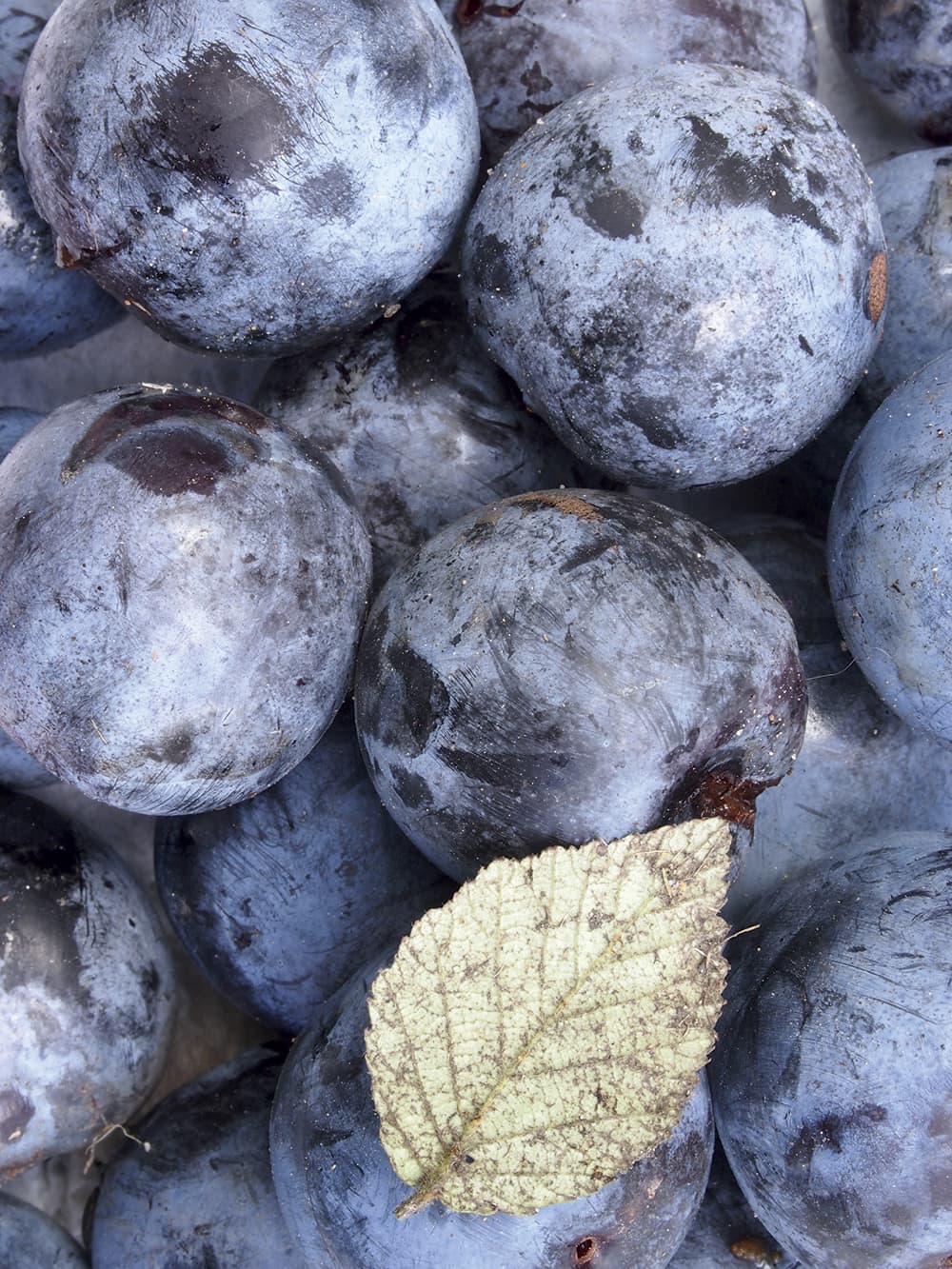
Autumn close-ups needn’t be limited to leaves and fungi – fruit and berries also make great subject matter.
Understanding the terms
Some people get hung up about the terminology surrounding macro and close-up photography. Although the terms are often used interchangeably, in reality only a reproduction ratio of 1:1, or a magnification of 1x (life-size), can be classed as true macro; anything less than that is classed as close-up. The term ‘reproduction ratio’ is used to describe the relationship between the size of the subject in real life, and the size it is recorded on the sensor. For example, a reproduction ratio of 1:2 means the subject will appear half its actual size on the sensor, whereas a reproduction ratio of 2:1 means that the subject will appear twice its actual size on the sensor.
Magnification is simply another way of expressing the reproduction ratio. If, for example, the reproduction ratio is 1:2, the magnification factor will be 0.5x, whereas a reproduction ratio of 2:1 will have a magnification factor of 2x. Truth be told, none of this actually matters – all you really need to know is how close you can get to your subject before the lens fails to focus, how best to manage the depth of field, how to light your subject and how to obtain the correct exposure.
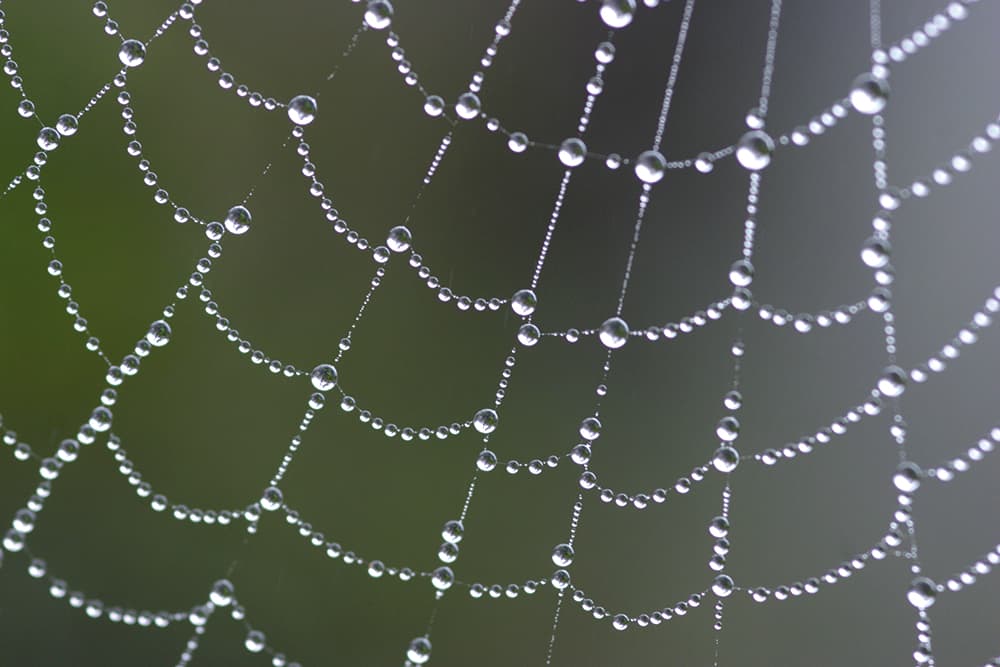
When your subject is close to the lens, depth of field is minimal and sharpness falls away rapidly.
Lenses and accessories
Macro lenses are designed to focus much closer than standard optics, resulting in frame-filling pictures at reproduction ratios between 1:2 (half life-size) and 5:1 (five times life-size), without the need for extension tubes or other add-ons. These lenses come in a range of focal lengths, but can generally be described as standard (usually 50 or 60mm), medium telephoto (such as 90 or 105mm), or long telephoto (like 200mm).
Medium telephoto lenses offer a greater working distance than standard macro lenses – making them ideal for shooting insects, reptiles and other sensitive creatures. They also have a narrower angle of view than lenses in the ‘standard’ category, showing less of the surrounding environment, which is great for isolating subjects. I’ve been using a Sigma 105mm f/2.8 EX DG OS HSM Macro lens for the best part of ten years now, and I have no complaints. This medium telephoto macro lens has a reproduction ration of 1:1 (life-size), and a working distance of 14.2cm. Greater magnifications can be achieved by attaching Sigma’s APO Tele Converter, but to be honest I’ve never really felt the need.
If a dedicated macro lens is out of your price range there are a number of cheaper (albeit slightly less effective) alternatives. The first is a close-up attachment lens (sometimes confusingly known as a close-up filter). These bits of glass screw to the front of your lens and reduce the minimum focusing distance. The Canon 52mm Close-Up Lens 500D, for example, changes the closest focusing distance of an EF lens from infinity to 50cm – it’s also priced around £100, which is significantly cheaper than a dedicated macro lens.
Another alternative is a reversing (or adapter) ring, which enables you to mount a lens on your DSLR back-to-front and use it like a high-powered magnifying glass. Good results can be obtained with modest equipment: when fitted to a camera with an APS-C sensor a standard kit lens (say 18-55mm) can achieve near life-size reproduction. However, as the electronic contacts are on the outside, communication between camera and lens is significantly reduced. Much of this can be overcome, but for Canon EOS users the easiest solution is to invest in a Novoflex EOS-RETRO ring, which transfers
all the electronic functions.
You might also like to consider a set of extension tubes. Typically sold in sets of three, these hollow tubes fit between the lens and the camera, and work by physically increasing the distance between the focal plane (sensor) and the rear of the lens, reducing the minimum focusing distance. The tubes come in different lengths (the longer the tube, the closer the lens can focus) and can be combined to obtain various magnifications. When stacking the tubes together you will experience some light loss, but if your camera is mounted to a tripod and you switch to manual focus it’s not a big deal.
Close-up photography is a relatively specialised subject and, as such, there are countless bits of kit you can buy to perfect your technique, such as focusing rails, angle finders and bellows, to name but a few. Yet the one tool no self-respecting close-up or macro photographer can be without is a tripod. If possible, invest in a model with a reversible central column so you can get super close to the ground without compromising on stability. For years I have relied on a Manfrotto 190CXPRO4 – it’s lightweight, quick to set up and collapses to a fairly compact size (52.5cm). I team this with a remote release.
My kit bag also contains a beanbag for low-level work, some tweezers (for removing stray leaves and repositioning subjects), a small pair of scissors (for trimming distracting blades of grass), a groundsheet (when surfaces are wet), a crumpled piece of tin foil (for reflecting light onto a subject), a diffuser, and sometimes a small water spray for refreshing tired blooms. I also make sure I’m kitted out in waterproof trousers – it’s hard to concentrate when you can feel water seeping through your clothes.
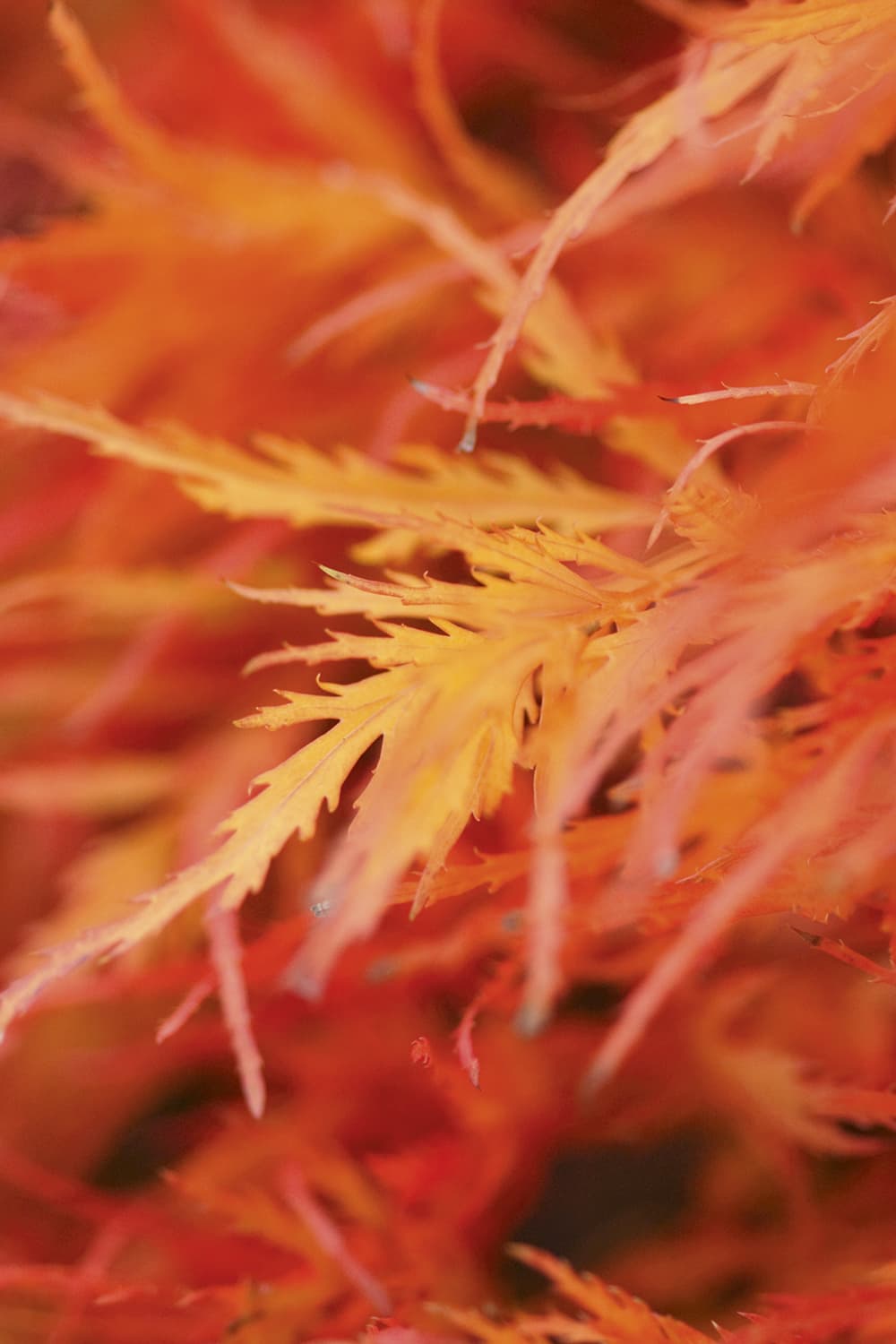
During autumn the foliage of the Japanese maple (Acer palmatum) is a truly striking sight.
Perfecting your technique
Close-up and macro photography are not without their challenges. If you’re shooting small plants or leaves on branches, one of the first problems you will encounter is subject movement. When you’re shooting up close, even the tiniest tremble can lead to significant blur. To keep plants steady you can insert a twig in the ground and tie the stem to it using floristry wire, but make sure that you leave everything as you found it. The best course of action, however, is to shoot in the morning on a bright but overcast day when the wind speed is low, and contrast is manageable. If you can’t avoid a slight breeze you could try creating a physical windbreak using your body or a piece of clear polythene attached to some garden canes.
The next challenge is obtaining accurate focus. When you’re shooting objects close to the lens depth of field is minimal, and even the smallest aperture will result in just millimetres of acceptable focus. As a result, accurate focusing is crucial. As we have discussed, every lens has a minimum focusing distance, and unless you are using close-up accessories it will struggle to lock on to a subject if you go beyond this distance. So be realistic about how close you can get.

Using manual focus allows you to be precise. In the first shot the lens was trained on the trunk, while in the second it was trained on the leaf.
Next, you need to turn off autofocus and take control of your lens. By using manual focus you are leaving nothing to chance. Combine this with live view and you can take advantage of useful features such as live view zoom preview, which allows you to magnify a precise area of the frame and then rotate the focusing ring to ensure this area is pin-sharp. Using manual focus is great for shooting ‘through’ things such as grass or leaves in the foreground too. If the lens is set to AF it will often try to focus on the subject closest to it, which is not always desirable.
The next consideration is how to light your subject. I’m a big fan of using available light, but also well aware that there are countless tools on the market to help you achieve beautifully lit macro shots. Manfrotto produces a range of portable LED lights called Lumimuse, for example, which can be fitted to mini tripods or attached to the hotshoe of your camera. (If you prefer a quick burst of flash, take a look at Nikon’s R1C1 Wireless Close-Up Speedlight system or Canon’s Macro Twin Lite MT-24EX – both offer great versatility in light direction and power).
Tools aside, the main requirement for mastering autumn close-up and macro photography is a childlike curiosity. Try to recall how it felt to throw a pile of leaves into the air, or discover a red-topped fly agaric mushroom for the very first time. Spend time studying the spiky casing of a beechnut, or the knotted bark of a tree. Let these experiences inform your photography, and make the most of this ‘season of mists and mellow fruitfulness’.
Tracy’s Top Tips
Keep it clean
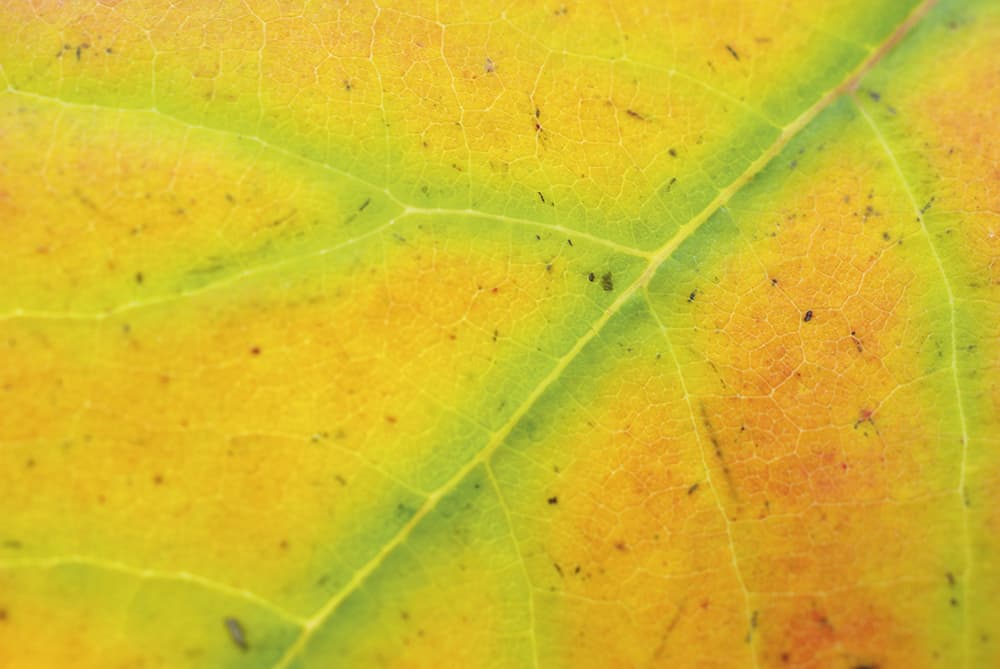
Use a paintbrush or a pair of tweezers to remove any stray pollen or dirt. When you’re shooting a light-coloured subject, such as this leaf, even the smallest amount of muck can be distracting in the final picture.
Check the weather forecast
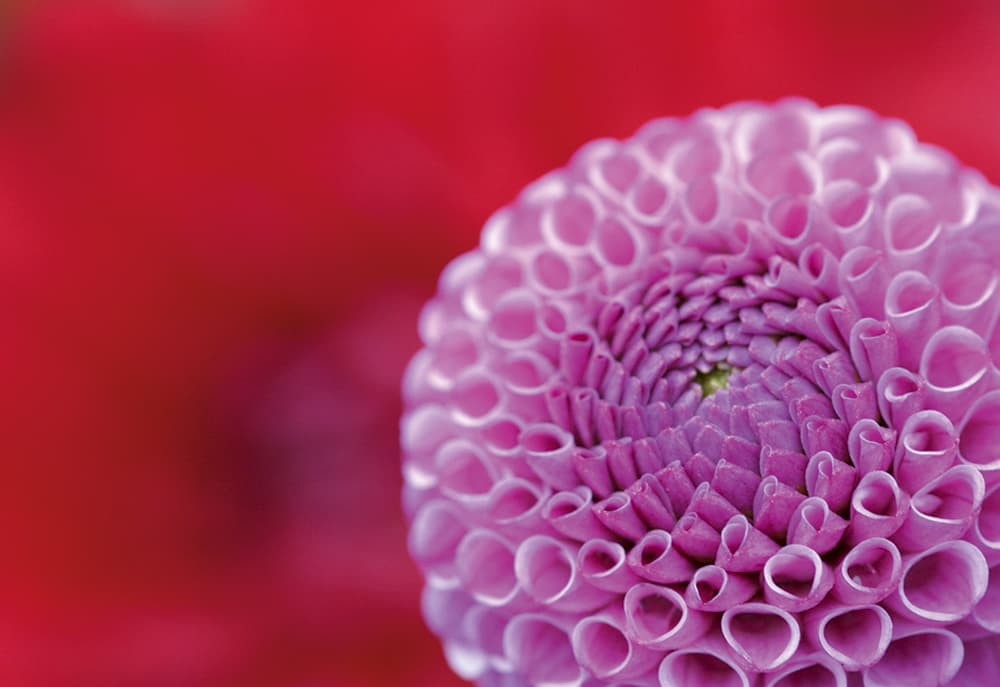
When the wind speed measures 5mph or more it can be tricky to shoot flowers – unless you’re using blur for artistic effect. Conditions tend to be calmer in the mornings, so it’s a good idea to head out early.
Reveal texture
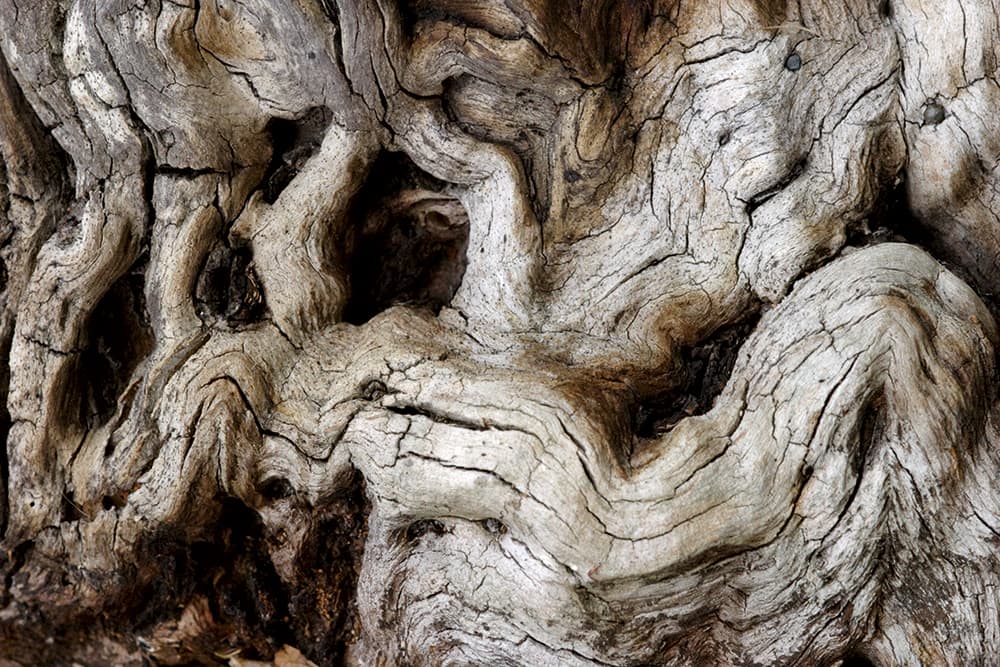
Bright but overcast days are perfect for revealing texture. Tree bark is a great example, with every knot and gash visible. If the day is bright wait for a cloud to cover the sun, diffusing the light and reducing the contrast.
Explore every angle

One of the joys of close-up photography is that you can often walk around your subject and view it from above, below or from the side. Try out all the options, and then experiment with portrait and vertical formats.
Show a small part
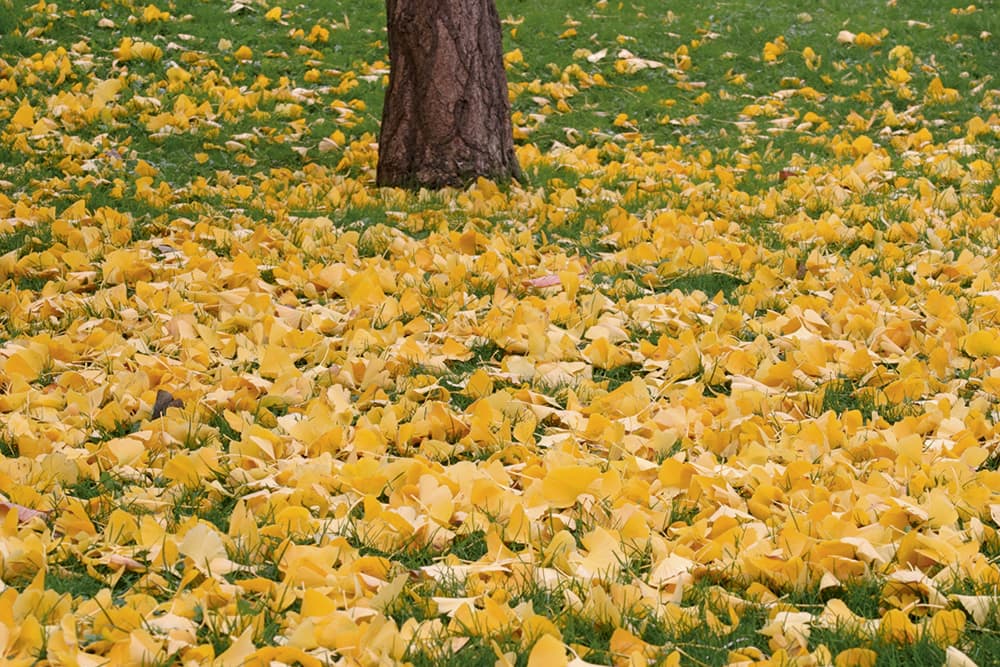
Don’t feel you have to include the entire subject in the picture; sometimes a small part can be suggestive of the whole. The leaves of the Ginkgo biloba turn bright yellow in autumn, making it an ideal subject.
Best places for autumn macro
New Forest National Park, Hampshire
With a glorious mix of ancient, ornamental and native trees, the New Forest delivers an impressive autumn display. It’s also popular for its abundance of fungi, and free-roaming horses and pigs, the latter of which are released in autumn for pannage. To find out more, visit www.thenewforest.co.uk.
Grizedale Forest, Lake District, Cumbria
Situated between the lakes of Coniston and Windermere, Grizedale Forest lies in the heart of the Lake District and offers 17 miles of marked trails, with autumn colour aplenty. There are also numerous outdoor sculptures to train your lens on. To find out more, visit www.forestry.gov.uk/grizedale.
Westonbirt National Arboretum, Gloucestershire
Autumn at Westonbirt is nothing short of spectacular. During November the maples are ablaze with colour; the aptly named paperbark maple makes a good subject with its peeling chestnut-brown bark. Native oaks and beech trees also add to the spectacle. To find out more, visit www.forestry.gov.uk/westonbirt.
Stourhead, Wiltshire
With a lake at its centre, Stourhead provides plenty of opportunities for reflections of autumn foliage. The tulip trees turn a vibrant yellow late in the sea on, while oak and beech trees add a fiery orange glow to the setting. To find out more, visit www.nationaltrust.org.uk.
Sheffield Park and Garden, East Sussex
With a huge variety of native and non-native trees reaching their peak at different times of the year, there is always something to shoot at Sheffield Park. Among the autumn highlights is the maidenhair tree (Ginkgo biloba) with its brilliant amber leaves. To find out more visit www.nationaltrust.org.uk.

Sheffield Park and Garden has four lakes, while the River Ouse lies at the bottom of the parkland.
Kit list
Beanbag
When you’re shooting at ground level, a beanbag is indispensable. Look for one made of tough, shower-proof material, with a filling that does not retain moisture. The C14.3 Camera Double Beanbag from Wildlife Watching Supplies is a popular choice.
Macro lens
Dedicated macro lenses are by far the best choice for close-up photography, offering superb image quality at close-focusing distances. The Canon EF-M 28mm f/3.5 Macro IS STM lens is designed for the Canon EOS M series, and features two built-in controllable LED lights.
DSLR or CSC
A digital camera with articulated LCD screen is always handy when shooting macro subjects close to the ground. Make sure the screen can be flipped out and rotated adequately. The Nikon D3400 has a 170° viewing angle and offers 100% frame coverage.
Tripod
Working with limited depth of field and large magnifications means that any movement of yourself or your subject appears magnified in the final picture. To avoid camera shake, invest in a reliable tripod – preferably with a reversible central column. The Manfrotto 055 series fits the bill.
Waterproof trousers
When you’re on the ground for long periods a ground mat or pair of waterproof trousers is essential. The Women’s Cascada II Trousers from Páramo use NikWax Analogy Waterproof fabric to keep you comfortable all day long.







